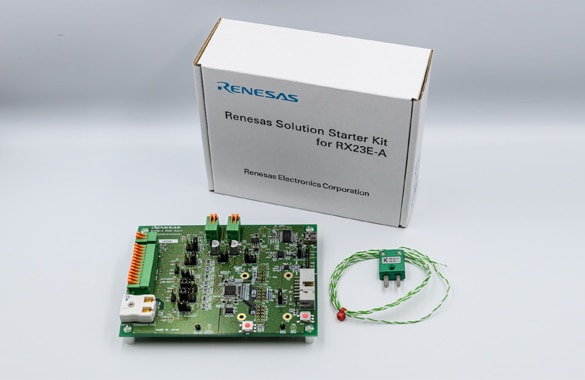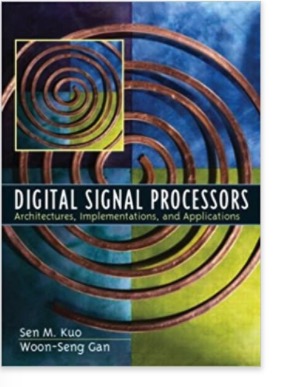Blog
Recent Posts
Digital Signal Processor Board With One CAN Bus Interface
Posted by on
Renesas Electronics Corporation, a Japanese company providing leading-edge semiconductor solutions, introduced its RX23E-A MCU starter kit for analog evaluation of automation and measurement equipment. It utilizes an onboard CAN Bus driver integrated circuit.
The starter kit serves developers working with the CAN-Bus-capable 32‑bit RX23E‑A MCU (micro-controller unit), featuring the analog front‑end (AFE). The package integrates hardware, software, and tools for evaluating the MCU’s 24‑bit A/D converter. The evaluation board is equipped with a plug-in terminal block to connect analog signals from temperature sensors, load cells, etc. Application software for thermocouple and weight measurement is available through the company’s website.
The GUI (graphical user interface) tool enables the user to enter and change the settings of AFE and A/D converter parameters. It is also possible to display graphs and histograms of A/D conversion results. Consequently, A/D conversion events are monitored in real-time in the same manner as applying an oscilloscope. For application development purposes, an emulator can connect to the board. Power is supplied via the USB connection, enabling the evaluation and software development employing a PC. There are onboard driver ICs for CAN Bus and EIA‑485, allowing the development of industrial network applications
The 32‑bit RX23E‑A MCU family supports the measurements of analog signals with a precision better than 0,1 percent without calibration. The units with the integrated analog front‑end (AFE) unit, comprise high‑precision sensor measurement, computation, control, and CAN Bus communication on a single chip. The configuration enables system manufactures to reduce the number of required components, save space, and simplify device design.
The MCUs utilize the RXv2 core, featuring operating speeds of 32 MHz, a digital signal processor (DSP), and a floating-point unit (FPU). The AFE unit comprises two 24‑bit delta-sigma A/D converters. There are up to six differential analog input channels and up to eleven pseudo-differential input channels.
Besides the CAN Bus interface, there are one SPI, four UARTs, and one I2C. The micro‑controller supports functional safety using software-based self-diagnostic and disconnection-detection assistance functions. The chip requires a 5VDC power supply, and it operates at an extended temperature range of -40 °C to +105 °C.
Analog Front End Features
- Dual 24-bit delta sigma A/D converters: Up to 23-bit effective resolution, Programmable data rate 7.6 sps to 15,625 ksps
- PGA: Rail-to-rail analog input, Gain 1 to 128, Offset drift 10 nV/°C, Gain drift 1 ppm/°C
- Voltage Reference: Low drift 4ppm/°C with good temperature stability
- Excitation Current Source: Matched programmable current source
MCU Features
- CPU: 32-bit RXv2 (32 MHz), DSP/FPU for digital signal processing
- Interface: SPI x 1 ch, UART x 4 ch, I2C x 1 ch, CAN x 1 ch
Digital Signal Processors: Architectures, Implementations, and Applications
Real-time digital signal processing (DSP) using general-purpose digital signal processors is a popular subject and challenging work in today's engineering fields. Real-time DSP provides an effective way of designing and implementing a variety of DSP algorithms for real-world applications. Many universities and industrial companies are currently engaged in real-time DSP research, education, and development.
With DSP penetrating various applications, the demand for high-performance digital signal processors has expanded rapidly in recent years. It has become increasingly important for today's students and practicing engineers to master not only the theory of DSP but also the techniques involved in real-time DSP system design and implementation.
This book offers learners a hands-on approach to understanding architecture and programming of DSP processors, and the design of real-time DSP systems. It contains real-world applications and the implementation of DSP algorithms using both the fixed-point and floating-point processors.
Other topics include FIR Filtering, IIR Filtering, Fast Fourier Transforms, and Adaptive Filtering. For use as a desktop reference for practicing engineers to learn DSP concepts and to develop real-time applications at work.
 Loading... Please wait...
Loading... Please wait...


